The new office of the Italian embassy in London is a love letter to the country’s creativity
Wallpaper* takes a peek inside Casa Italia, the new Italian embassy in London, designed by our long-time collaborator Nick Vinson
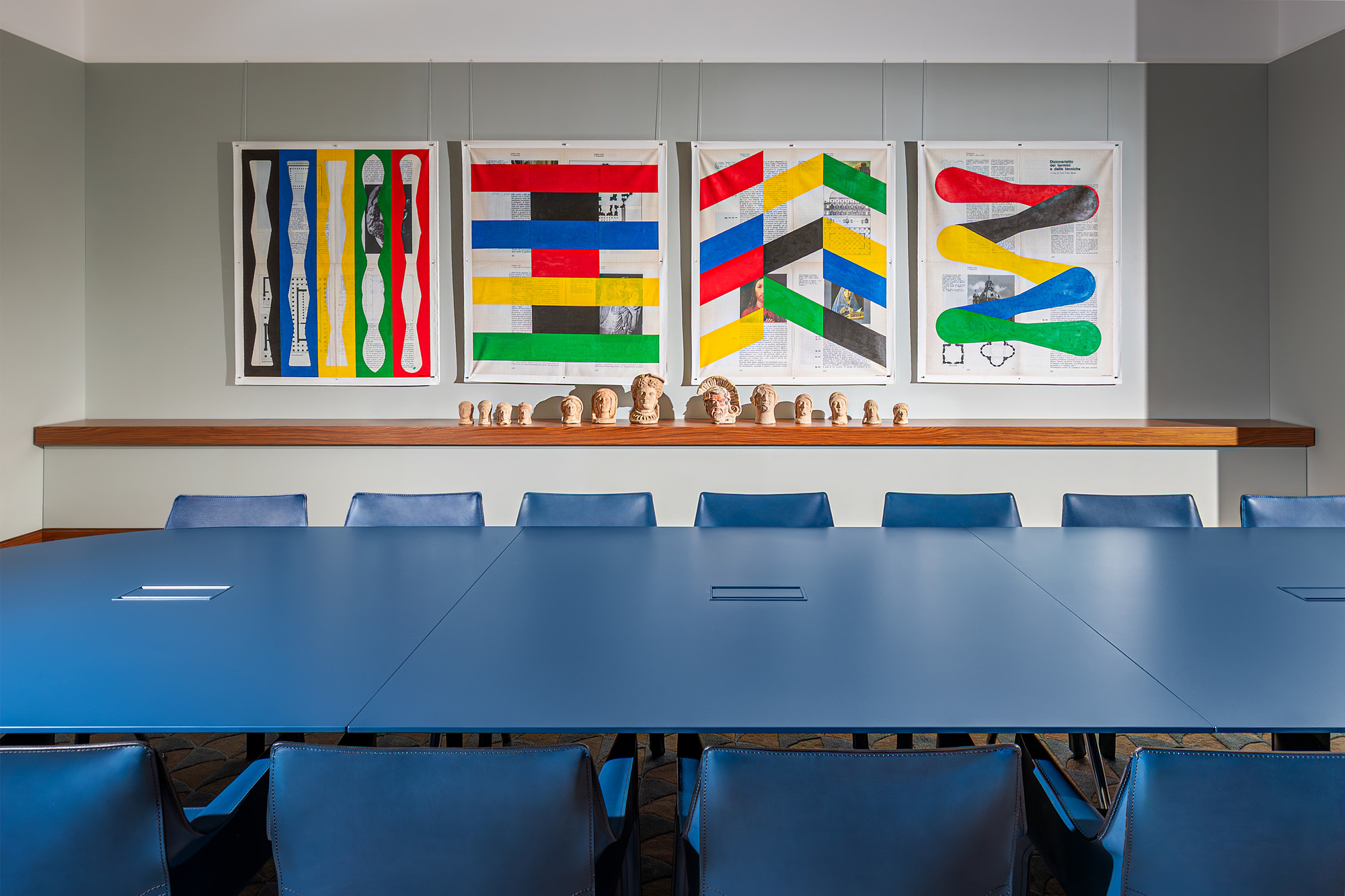
An embassy holds many identities. More than just a diplomatic location that represents a country abroad, it is also a mirror of its cultural values and artistic identity. So when long-term Wallpaper* collaborator Nick Vinson was tasked by the Italian embassy in London with creating a space that reflects the country’s rich creative heritage while serving as a functional home for its diplomatic mission, he set about crafting a series of striking, one-of-a-kind interiors that characterise these many identities with sophistication.
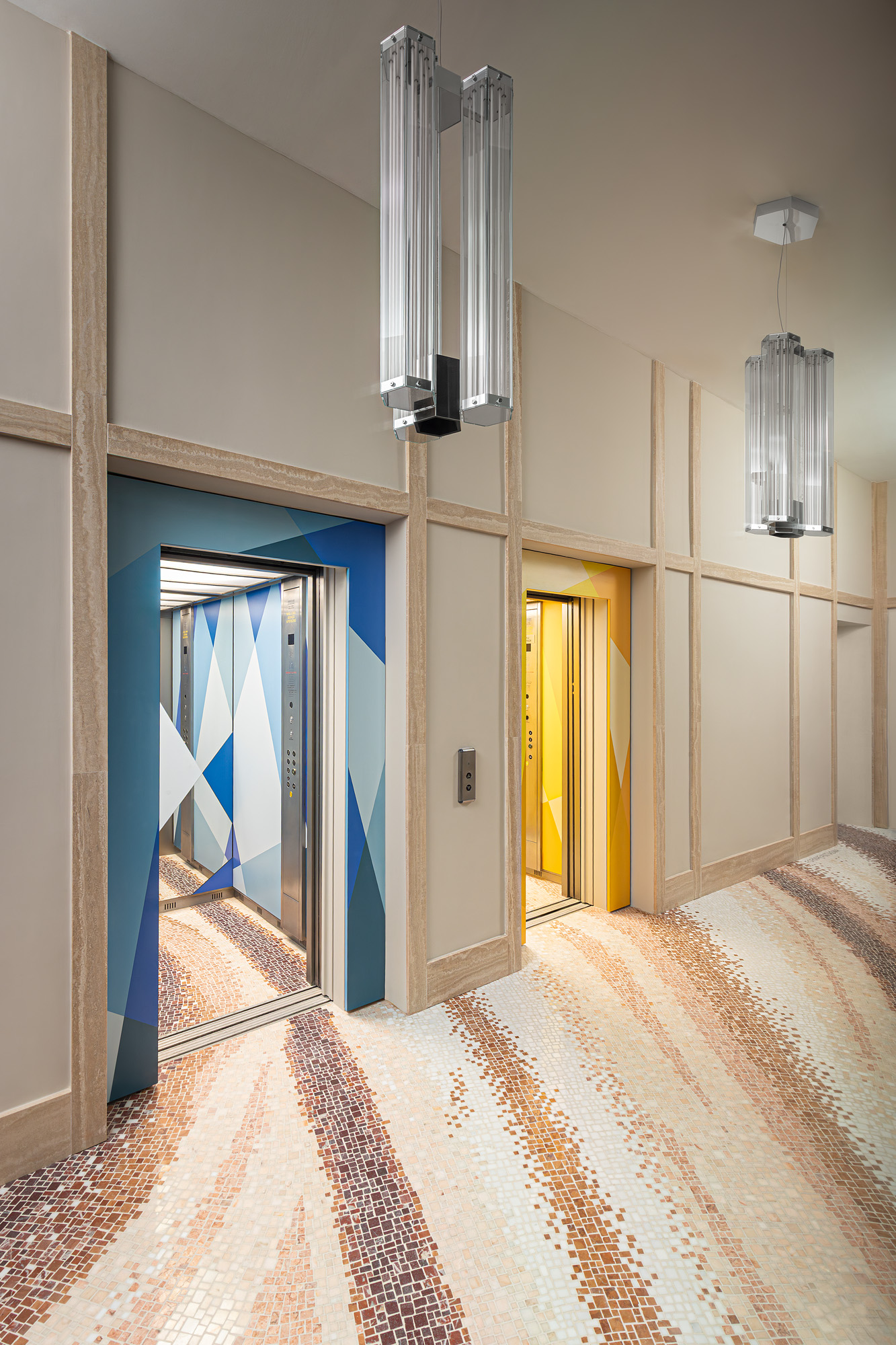
Lift cars, by Martino Gamper, with Abet Laminati, custom made and installed by Saporiti Italia. Classic travertine trim, by Marsotto. ‘Superwire S3’ pendants, by Formafantasma, for Flos. Mosaic flooring, by Formafantasma, for Fantini Mosaici
Fresh from a recent commission to redesign the Italian ambassador’s residence in London, Vinson is well-versed in the creative needs of a diplomatic delegation. His shell was a five-storey listed building, facing Buckingham Palace on one side (it had originally been built as a police station for Queen Victoria), which he chose to adorn in a rich colour palette and art from some of Italy’s most relevant creative moments.
Guests entering Casa Italia are instantly in the thrall of a sophisticated curation that chronicles a rich visual history. ‘Italian lobbies are generally fabulous, so we needed to create something equally fitting,’ says Vinson, who enlisted design studio Formafantasma to create an impactful floor motif for the entrance. Studio founders Andrea Trimarchi and Simone Farresin worked with mosaic specialist Fantini Mosaici on a design inspired by the floors in Luigi Caccia Dominioni’s Teatro Filodrammatici in Milan. Created with stones exclusively available in Italy, the mosaic embodies the spirit of midcentury Italian design while responding to the space and its use. ‘To design it, we imagined the flow from the entrance into the building, creating an infographic of the movements within the room,’ says Farresin.
Vinson’s vision for a grand entrance also included a pair of lifts, a collaboration between Martino Gamper and surface specialist Abet Laminati. Contrasting with the rationalist-style travertine trim from Marsotto and Formafantasma’s ‘Superwire’ pendants, Gamper’s burst of geometric shapes in a palette of blues and yellows both frames the lifts and leads guests inside.

Mosaic flooring, by Formafantasma, for Fantini Mosaici, going into lift cars, by Martino Gamper, with Abet Laminati
‘I wanted the design to act like a host: to greet visitors, to invite them in, and to carry them gently from one area to the next,’ says Gamper. ‘The geometric compositions are not just decorative; they create a sense of flow and orientation, turning what might be a mere transitional space into a moment of visual pleasure and curiosity.’
The project was supported by art patrons Sian and Matthew Westerman, Valeria Napoleone, Nicoletta Fiorucci and Nathan Clements-Gillespie. ‘Their belief in experimentation creates the space for projects like this to exist,' shares Gamper. 'Nathan, with his curatorial insight, helped shape how the work fits into the larger context of the space and the visitor experience. It’s a collaboration built on trust and shared curiosity, and that makes all the difference.’
Opening this month, Casa Italia will house the Italian Trade Agency and the Italian Cultural Institute, and will include offices for the ambassador and his deputy, as well as workspaces for the economic and political delegation, and administrative and financial offices. Every interior element was painstakingly curated by Vinson, who worked closely with Italian cultural archives, institutions and foundations to put together an art collection that deftly depicts Italy’s artistic landscape, both historical and contemporary.
Receive our daily digest of inspiration, escapism and design stories from around the world direct to your inbox.
He also collaborated with manufacturing specialists such as Saporiti, who not only supported Vinson with some of the building’s furnishings, but also helped create architectural uniformity throughout, with rooms entirely clad in panels by Piero Lissoni for Alpi. Listone Giordano supplied the Michele De Lucchi-designed hardwood flooring for a bespoke stage for the main hall.
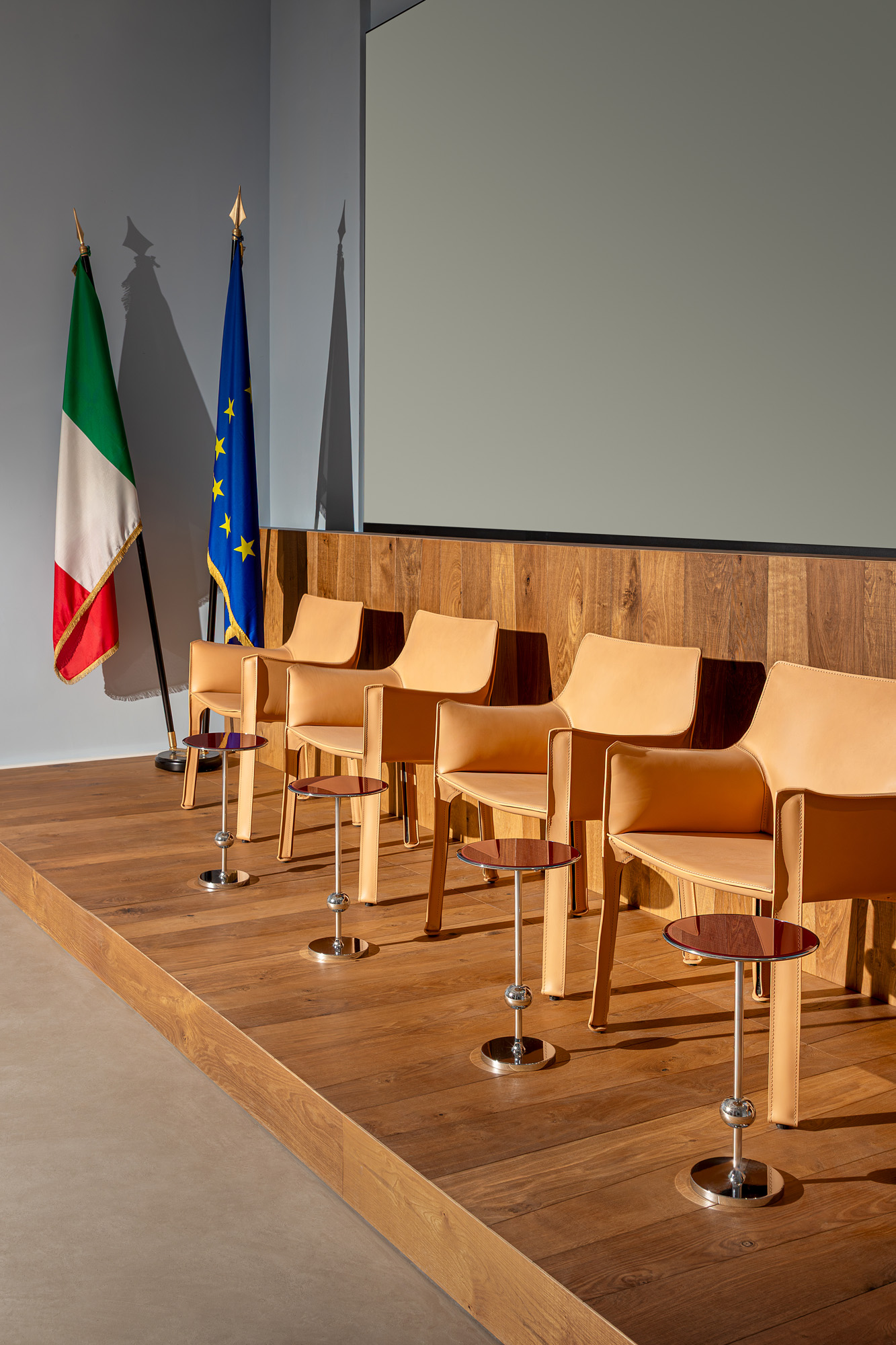
In the main hall, platform in Medoc Firenze by Michele de Lucchi for Listone Giordano and Cab armchairs by Mario Bellini for Cassina
All the interiors are defined by a style language that blends a classic warmth with a contemporary utilitarian sensibility, as well as a bold and eclectic use of colour and art. The waiting room, a preamble to a library named after Italian 20th-century writer Eugenio Montale, features Vincent Van Duysen’s ‘Augusto’ sofa for Molteni & C and LSM’s ‘Andromeda’ table for UniFor, with a pair of Controluce sculptures by Pietro Consagra. ‘As Pietro Consagra’s heir, I am delighted to be part of an initiative that enhances a historic site with examples of modern and contemporary creativity, conveying a fascinating example of cultural diplomacy,’ says Gabriella Di Milia, who is also president of the artist’s archive.
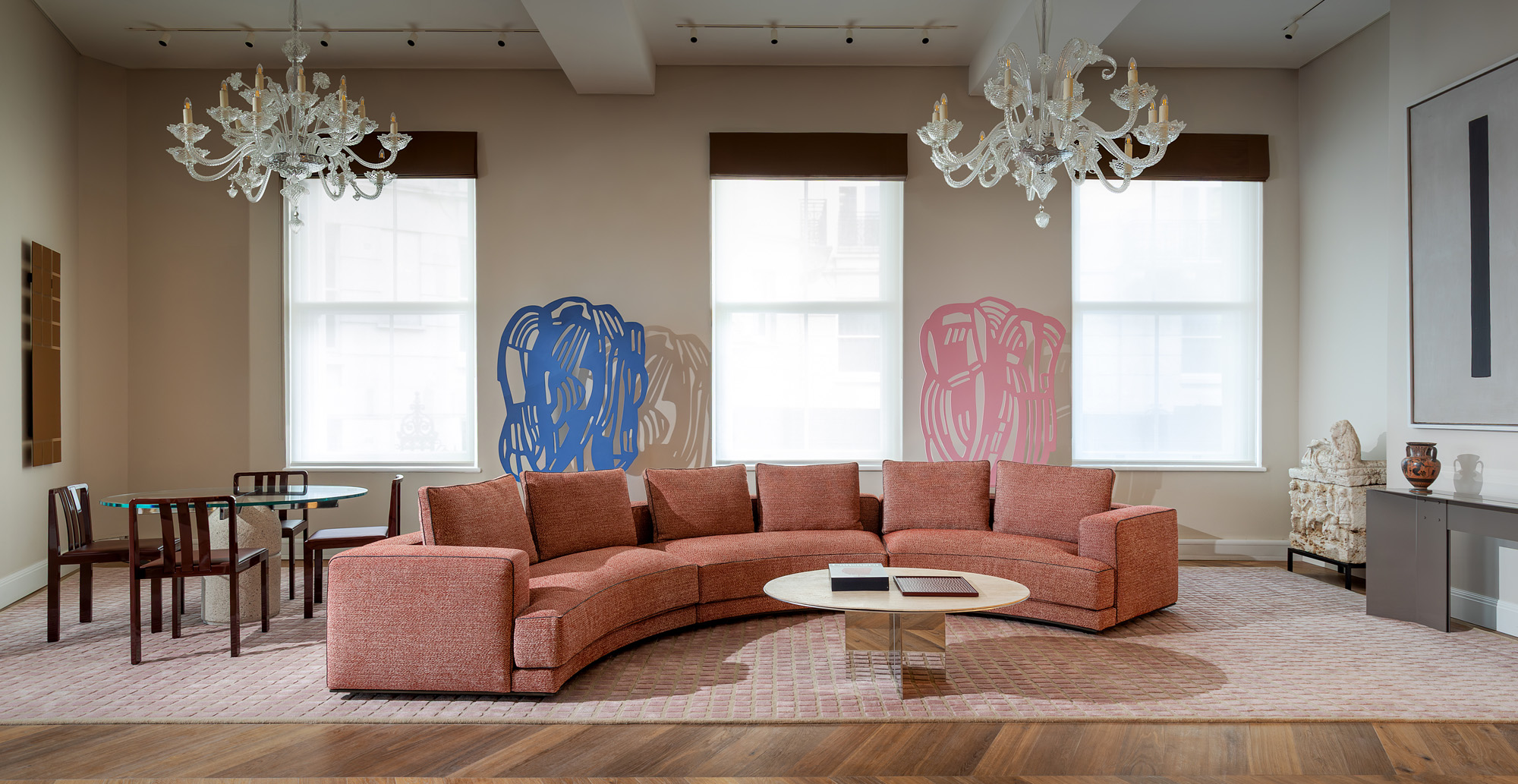
‘Paracarro’ table, by Giovanni Offredi, for Saporiti. ‘123’ chair, by Michael Anastassiades, for Molteni & C. Murano two-tier chandeliers with leaf frond volutes, pendant finial and moulded shaft. ‘Light Shadow Spot 45’ lighting system on Zero Track Pro, by Flos Architectural. ‘Dahlia’ fabric blinds in Marrone, by Rubelli. Rug, designed by Nick Vinson in collaboration with CC-Tapis, inspired by the Olivetti showroom by Carlo Scarpa, Venice. ‘Augusto’ sofa, by Vincent Van Duysen, for Molteni & C. Controluce sculptures, 1998, by Pietro Consagra. ‘Andromeda’ table, by LSM, for UniFor. Tray, designed by Nick Vinson for Giobagnara, inspired by the Olivetti showroom by Carlo Scarpa, Venice. Travertine cinerary urn, from the National Etruscan Museum at Villa Giulia in Rome. ‘Origata’ console, by Nao Tamura, for Porro. Amphora from the 6th century BC, from the National Etruscan Museum at Villa Giulia in Rome. Presenza, 1965, by Arturo Vermi. ‘Firenze’ chevron parquet flooring, by Listone Giordano

Superficie 480, 1967, by Giuseppe Capogrossi. ‘D.151.4’ armchairs, by Gio Ponti, for Molteni & C. ‘Andromeda’ side tables, by LSM, for UniFor. ‘Light Shadow Spot 45’ lighting system on Zero Track Pro, by Flos Architectural. ‘Libreria CF’ shelving system, by Dante Bonuccelli, for UniFor. ‘Dahlia’ fabric blinds in Marrone, by Rubelli. Rug, designed by Nick Vinson in collaboration with CC-Tapis, inspired by the Olivetti showroom by Carlo Scarpa, Venice. ‘123’ chairs, by Michael Anastassiades, for Molteni & C. ‘Less’ tables, by Jean Nouvel, for UniFor. ‘Gustave’ table lamps, by Vincent Van Duysen, for Flos. Murano two-tier chandeliers with leaf frond volutes, pendant finial and moulded shaft. ‘Firenze’ chevron parquet flooring, by Listone Giordano
A pair of sliding doors, designed by Franco Mirenzi and Vittorio Parigi for Citterio, separate this space from the adjoining library, which is fitted out with Dante Bonuccelli’s modular ‘Libreria CF’ bookcase for UniFor, a slim system that complements the room’s visual richness.
‘Supporting Italy and the institutional spaces that represent it around the world is a source of great pride for us: it is an opportunity to express Italian quality and design in some prestigious international contexts,’ says UniFor CEO Carlo Molteni. The space’s multilayered effect is conveyed by some intricately crafted Murano chandeliers, a 1960s Giuseppe Capogrossi tapestry, and furniture that includes chairs by Gio Ponti and Michael Anastassiades for Molteni & C.

‘Velaria’ sliding doors, by Rimadesio. ‘Silver’ armchairs, by Vico Magistretti, for De Padova. ‘Paracarro’ table, by Giovanni Offredi, for Saporiti. ‘Light Shadow Spot 60’ lighting system on threephase track, by Flos Architectural. ‘Dahlia’ fabric blinds in Marrone, by Rubelli. ‘Luce Orizzontale S1’ pendant, by Ronan & Erwan Bouroullec, for Flos. ‘Origata’ benches, by Nao Tamura, for Porro
Among the public locations within the building is also a small exhibition space, defined by a muted colour scheme. Sliding doors by Rimadesio divide the room, which will serve as a function space and gallery, making its debut in November with an exhibition of works by JMW Turner painted during his travels around Italy.

Inter-ena-cubo series, 1967, by Paolo Scheggi; ‘Silver’ armchairs, by Vico Magistretti, for De Padova
The work of avant-garde 1960s artist Paolo Scheggi defines the main hall, a room dedicated to talks and press conferences. Art historian Ilaria Bignotti, curator of the Scheggi Archive, explains the pieces in the space. ‘Made with coloured cardboard modules, appropriately folded and cut to form enchanting and dynamic patterns, the Inter-ena-cubi, created between 1967-1969 by Paolo Scheggi, are arranged in the environment as elements of plastic integration to architecture and design.’
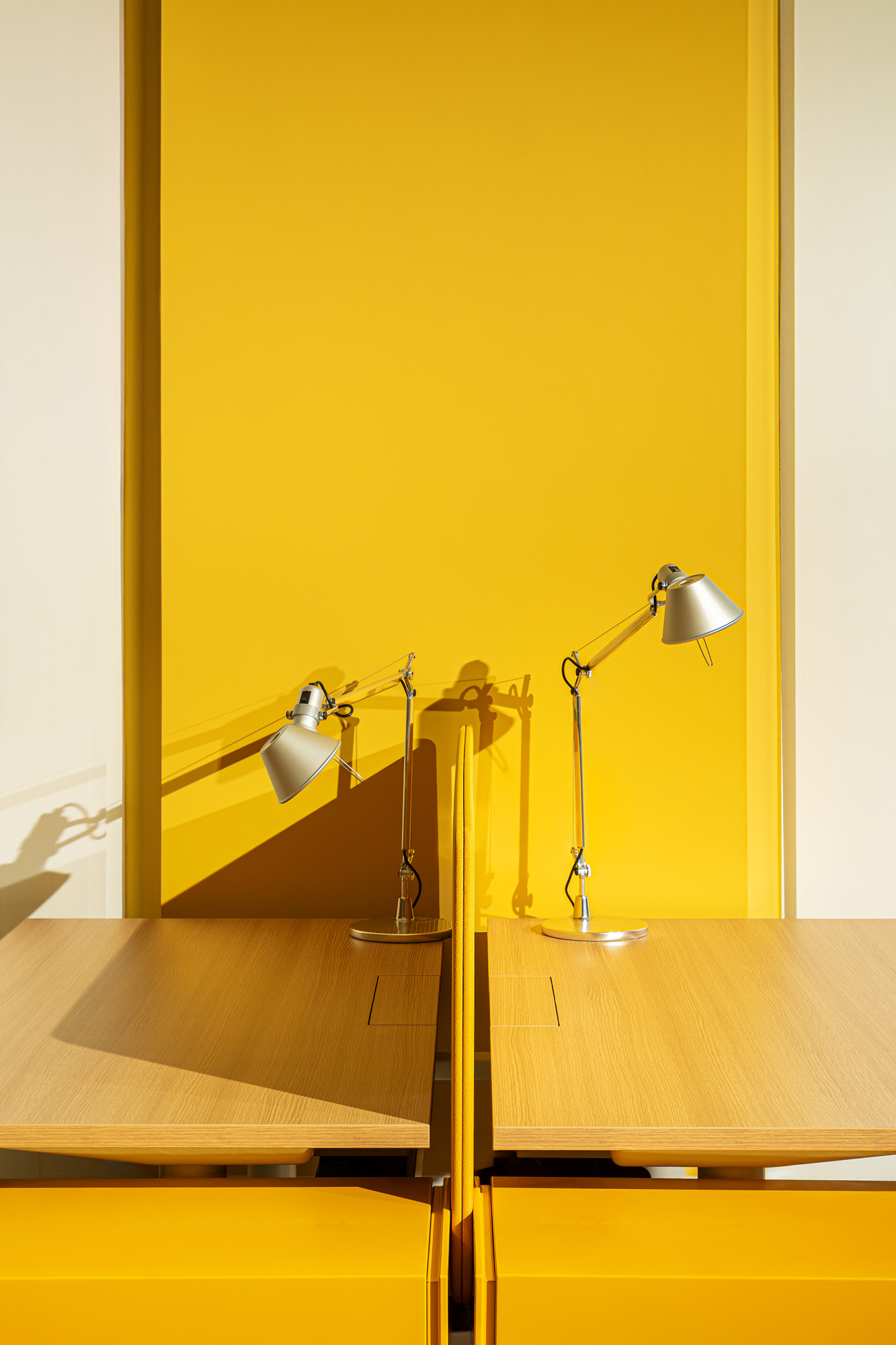
Tolomeo lamp desk lamp by Michele De Lucchi and Giancarlo Fassina for Artemide, iSatelliti S/200 workstation, Neutra cabinets and Mobili MS cabinets by Unifor
The upper floors serve as workspaces for the embassy’s staff, and are characterised by a bold chromatic narrative. Each area is defined by a variation of a single shade, with palettes of red, yellow and green used for desks and cabinets by UniFor, as well as on the walls.
For the offices of the ambassador and his deputy, Vinson imagined two inviting spaces (one in blue, the other in red), with minimalist leather-clad desks by Lella and Massimo Vignelli, Mario Bellini chairs, Gianfranco Frattini ‘Kyoto’ tables and Luigi Caccia Dominioni lamps.
Among Vinson’s most compelling additions to the space is a commission of Italian artist Gianpaolo Pagni, whose work is often created using old scholastic textbooks to reflect what he calls a ‘collective cultural archaeology’. When Vinson and Pagni first met, the artist was working on a series of pieces using a textbook from his school days. ‘These pages bear traces of scribbles and notes; they are underlined in pencil or highlighter, all traces of the time spent studying,’ says Pagni. ‘It’s a curious feeling to find yourself standing before these pages 30 years later, painting on them and leaving another layer of memory.’ Vinson connected Pagni with textile company Rubelli, who recreated the textbook’s pages in canvas, on which the artist painted his motifs.
This quadriptych now hangs in the office meeting room, accompanied by a series of Etruscan sculptures on loan from Rome’s National Etruscan Museum at Villa Giulia (more Etruscan objects can be found elsewhere in the space, including in the waiting room).

View of the Ambassador's office, with a view of Antony Gormley's Receive II, 2017. In the corridor hangs Michelangelo Pistoletto's Color and Light, 2024

The Ambassador, rug, designed by Nick Vinson in collaboration with CC-Tapis, inspired by the Baths of Caracalla, Rome. ‘Spider Maximus’ chandelier, by Achille Salvagni Atelier. ‘Lyra’ armchairs, by Renzo Frau; ‘Kyoto’ coffee table, by Gianfranco Frattini, both for Poltrona Frau. Le Penne 16B, 1972, by Tino Stefanoni. Tray, designed by Nick Vinson for Giobagnara, inspired by the Baths of Caracalla, Rome. ‘Dahlia’ curtains in Marrone, by Rubelli. ‘Alba’ sheer curtains in Sabbia, by Rubelli. ‘Città delle Pieve’ flooring, by Listone Giordano. Wall panelling, shelving and doors in Santos 12.26 by Piero Lissoni for Alpi made and installed by Saporiti
But perhaps the most symbolic of the project is the Antony Gormley sculpture in the ambassador’s office, representing an aptly harmonious bridge between the British and Italian cultural landscape. ‘I credit the ambassador for his keen desire to have a showcase of Italian-made excellence merged with British creativity,’ says Vinson.
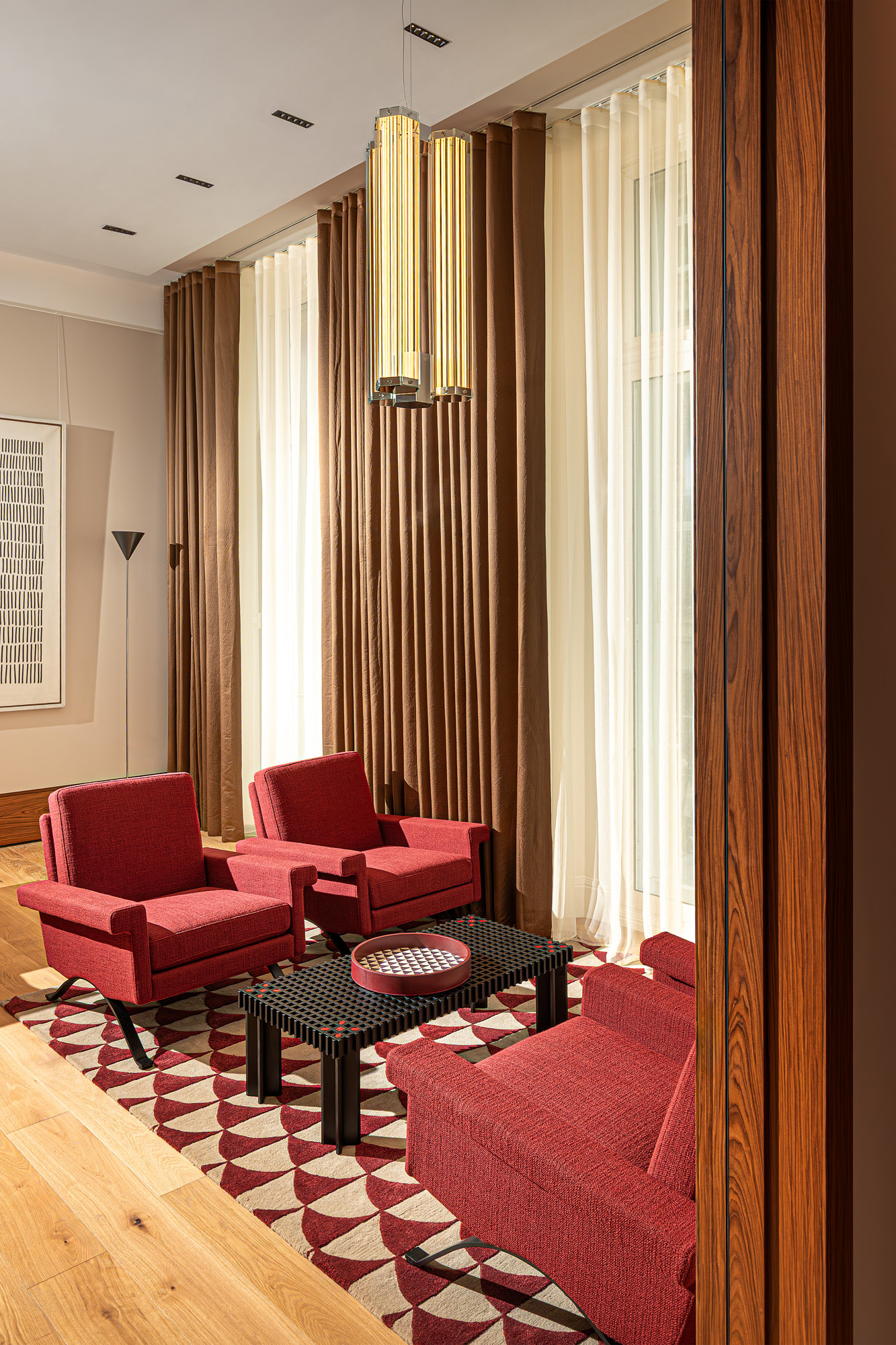
The deputy's office, featuring Senza Titolo, 1965, by Arturo Vermi. ‘875’ armchairs, by Ico Parisi, for Cassina. ‘Imbuto’ floor lamp, by Luigi Caccia Dominioni, for Azucena. Rug, designed by Nick Vinson in collaboration with CC-Tapis, inspired by the Baths of Caracalla, Rome. ‘Dahlia’ curtains in Marrone, by Rubelli. ‘Alba’ sheer curtains in Sabbia, by Rubelli. ‘Kyoto’ coffee table, by Gianfranco Frattini, for Poltrona Frau. Tray, designed by Nick Vinson for Giobagnara, inspired by the Baths of Caracalla, Rome. ‘Superwire S3’ pendants, by Formafantasma, for Flos. ‘Città delle Pieve’ flooring, by Listone Giordano. Wall panelling, shelving and doors in Santos 12.26 by Piero Lissoni for Alpi made and installed by Saporiti
Rosa Bertoli was born in Udine, Italy, and now lives in London. Since 2014, she has been the Design Editor of Wallpaper*, where she oversees design content for the print and online editions, as well as special editorial projects. Through her role at Wallpaper*, she has written extensively about all areas of design. Rosa has been speaker and moderator for various design talks and conferences including London Craft Week, Maison & Objet, The Italian Cultural Institute (London), Clippings, Zaha Hadid Design, Kartell and Frieze Art Fair. Rosa has been on judging panels for the Chart Architecture Award, the Dutch Design Awards and the DesignGuild Marks. She has written for numerous English and Italian language publications, and worked as a content and communication consultant for fashion and design brands.
-
 Terrified to get inked? This inviting Brooklyn tattoo parlour is for people who are 'a little bit nervous'
Terrified to get inked? This inviting Brooklyn tattoo parlour is for people who are 'a little bit nervous'With minty-green walls and an option to 'call mom', Tiny Zaps' Williamsburg location was designed to tame jitters
-
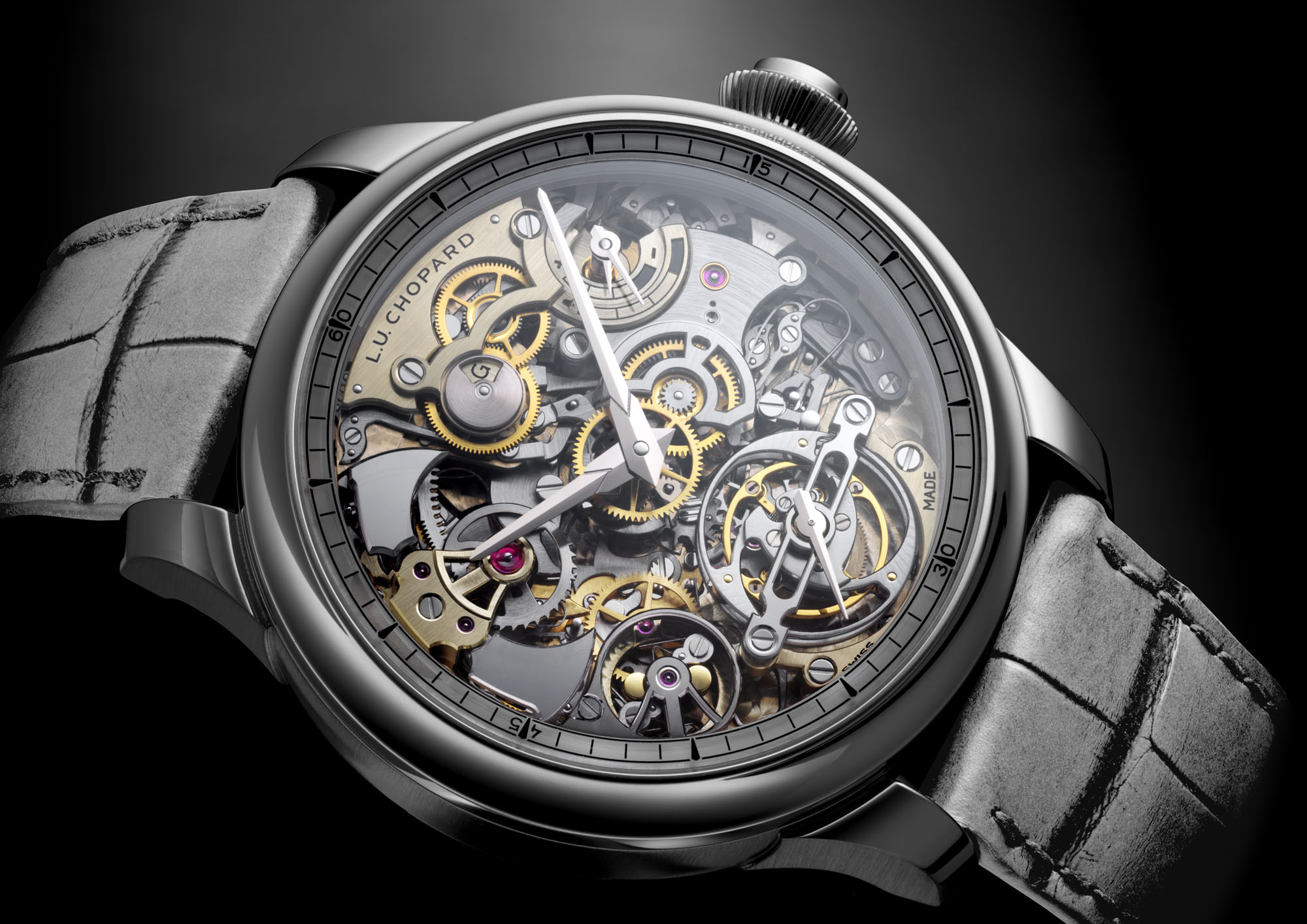 Let’s hear it for the Chopard L.U.C Grand Strike chiming watch
Let’s hear it for the Chopard L.U.C Grand Strike chiming watchThe Swiss watchmaker’s most complicated timepiece to date features an innovative approach to producing a crystal-clear sound
-
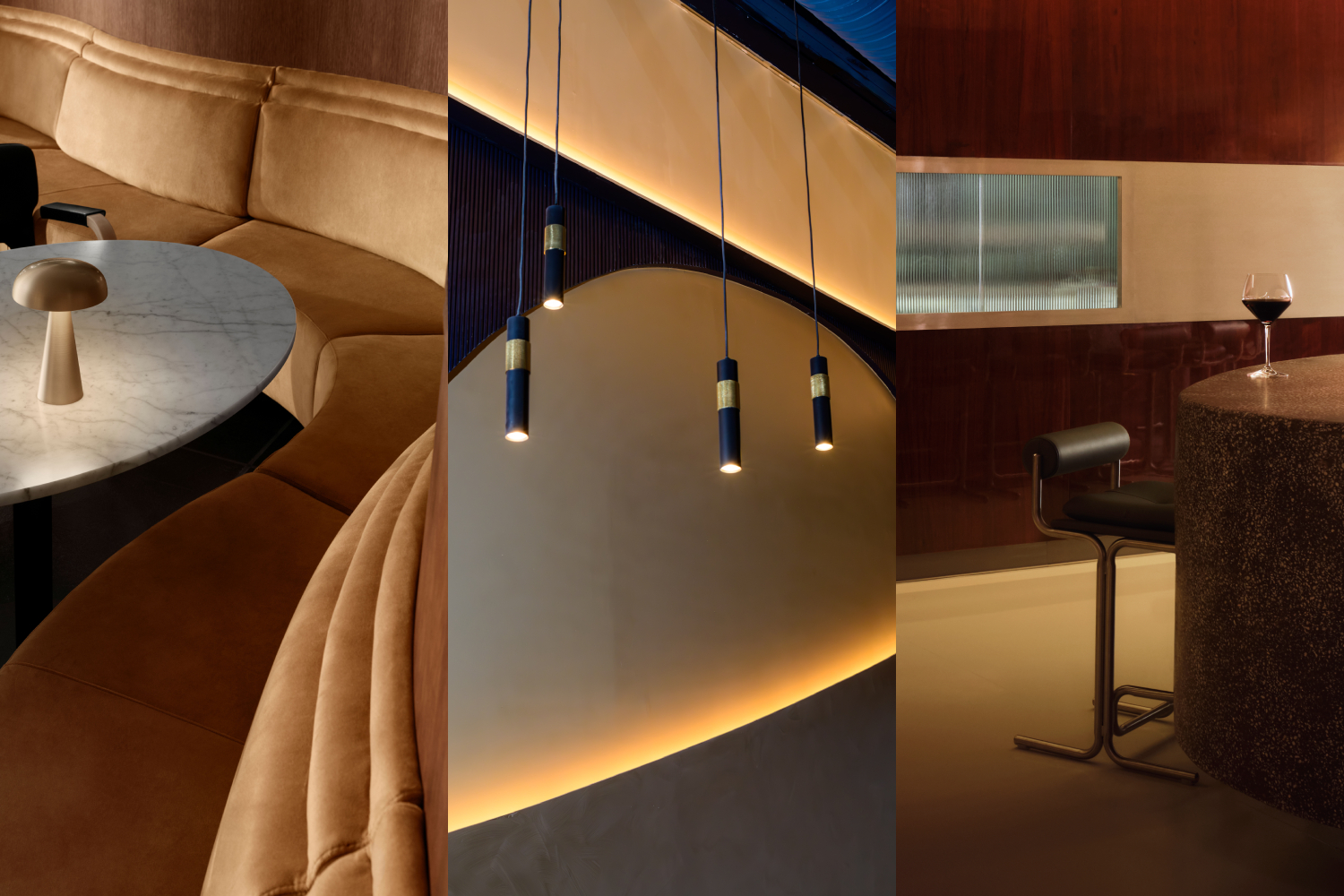 Form... and flavour? The best design-led restaurant debuts of 2025
Form... and flavour? The best design-led restaurant debuts of 2025A Wallpaper* edit of the restaurant interiors that shaped how we ate, gathered and lingered this year
-
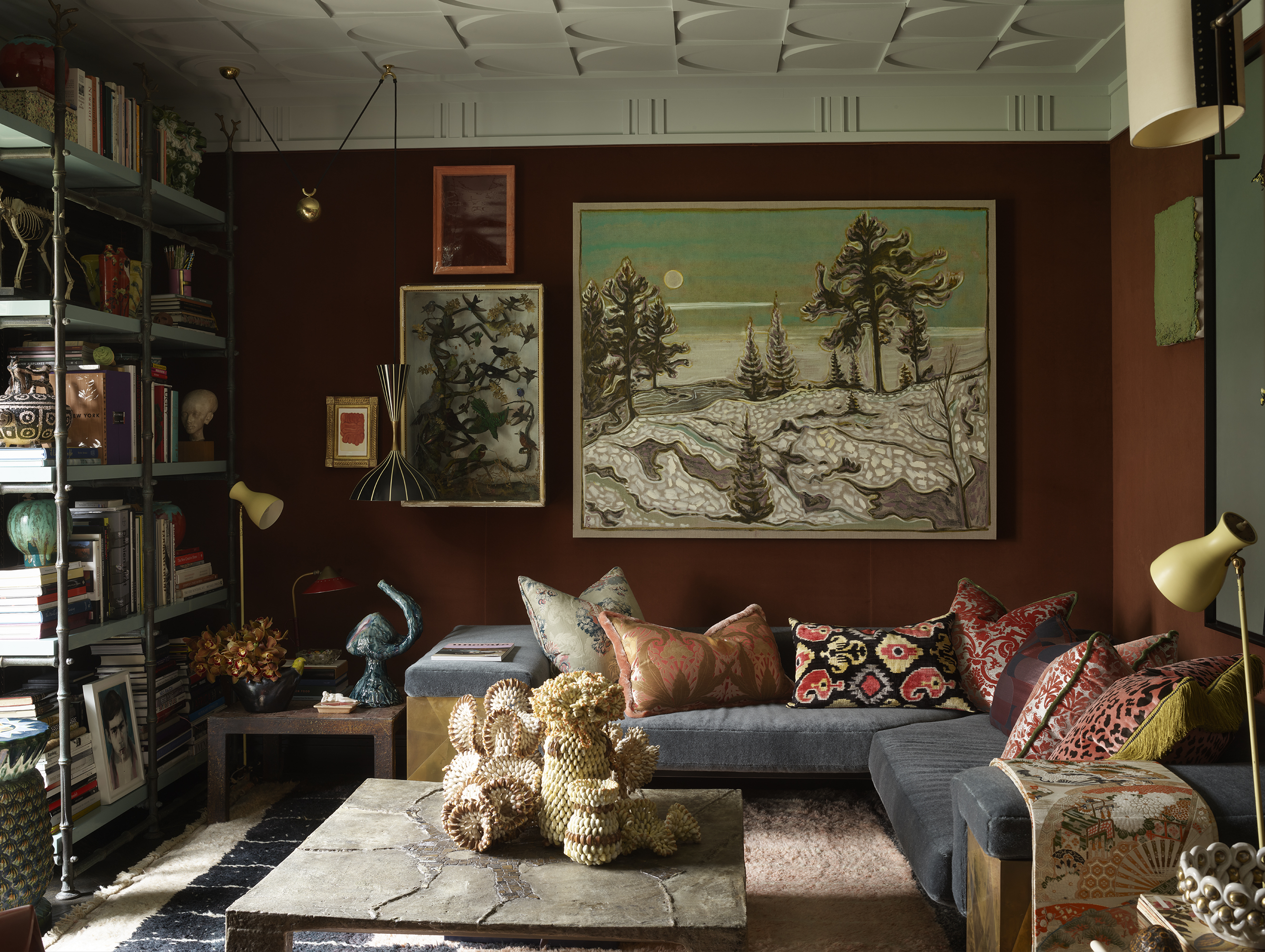 This designer’s Shoreditch apartment is ‘part grotto, part cabinet of curiosities’
This designer’s Shoreditch apartment is ‘part grotto, part cabinet of curiosities’The apartment serves as Hubert Zandberg’s ‘home away from home’, as well as a creative laboratory for his design practice. The result is a layered, eclectic interior infused with his personality
-
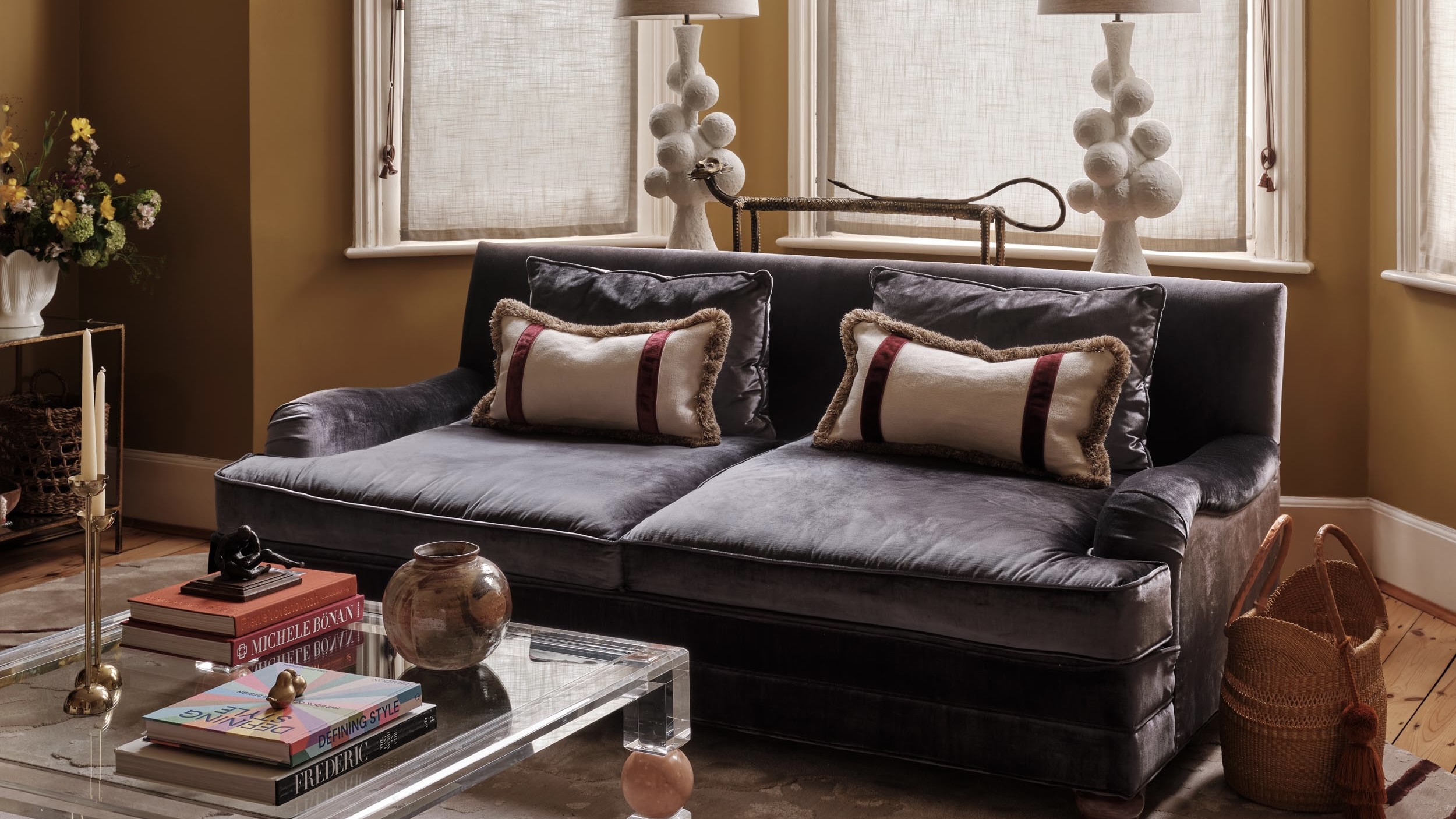 Colour and texture elevate an interior designer’s London home
Colour and texture elevate an interior designer’s London homeTo beautify her home without renovations, Charu Gandhi focused on key spaces and worked with inherited details
-
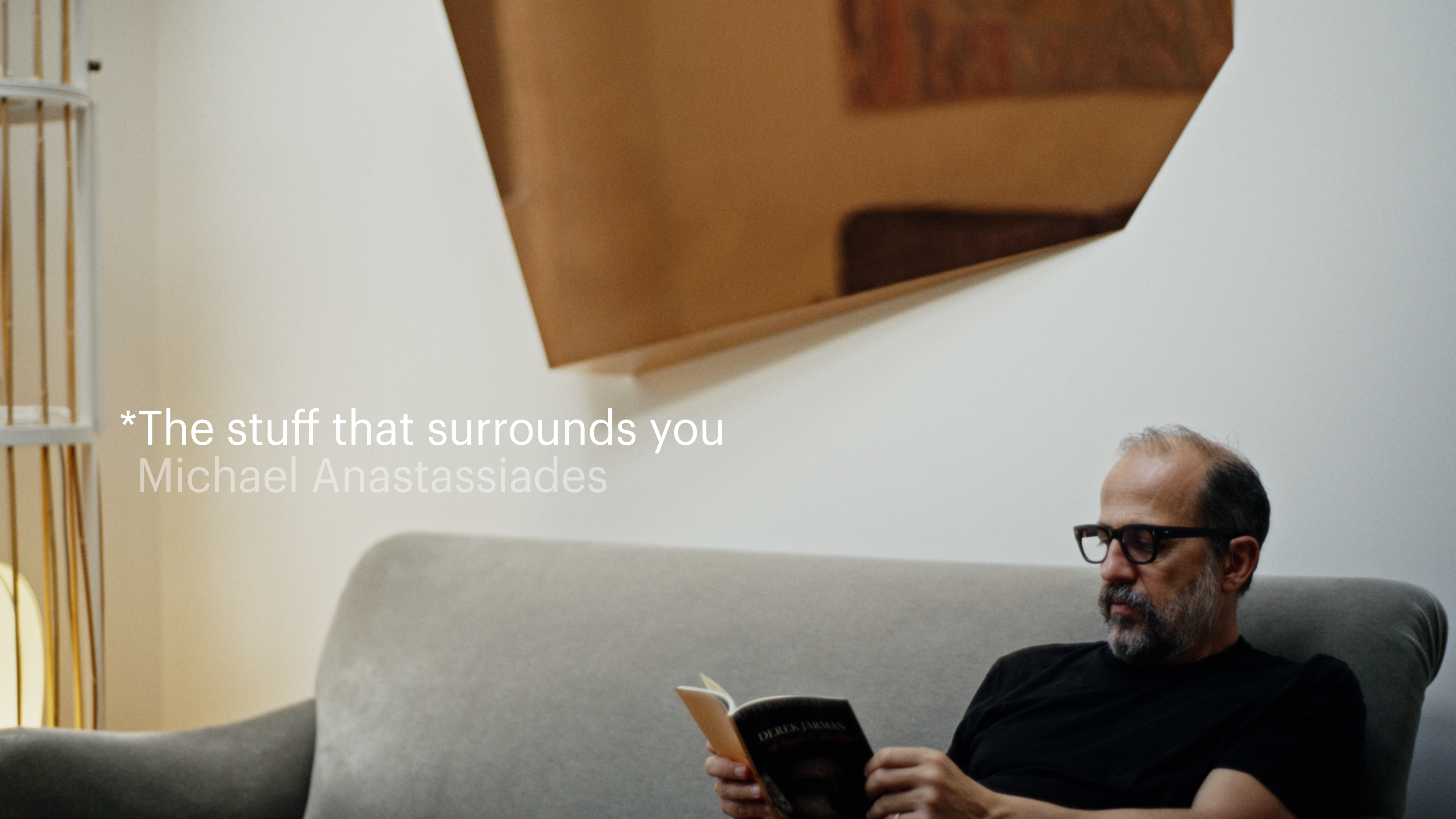 The Stuff That Surrounds You: Inside the home of designer Michael Anastassiades
The Stuff That Surrounds You: Inside the home of designer Michael AnastassiadesIn The Stuff That Surrounds You, Wallpaper* explores a life through objects. In this episode, we step inside one of the most considered homes we've ever seen, where Anastassiades test drives his own creations
-
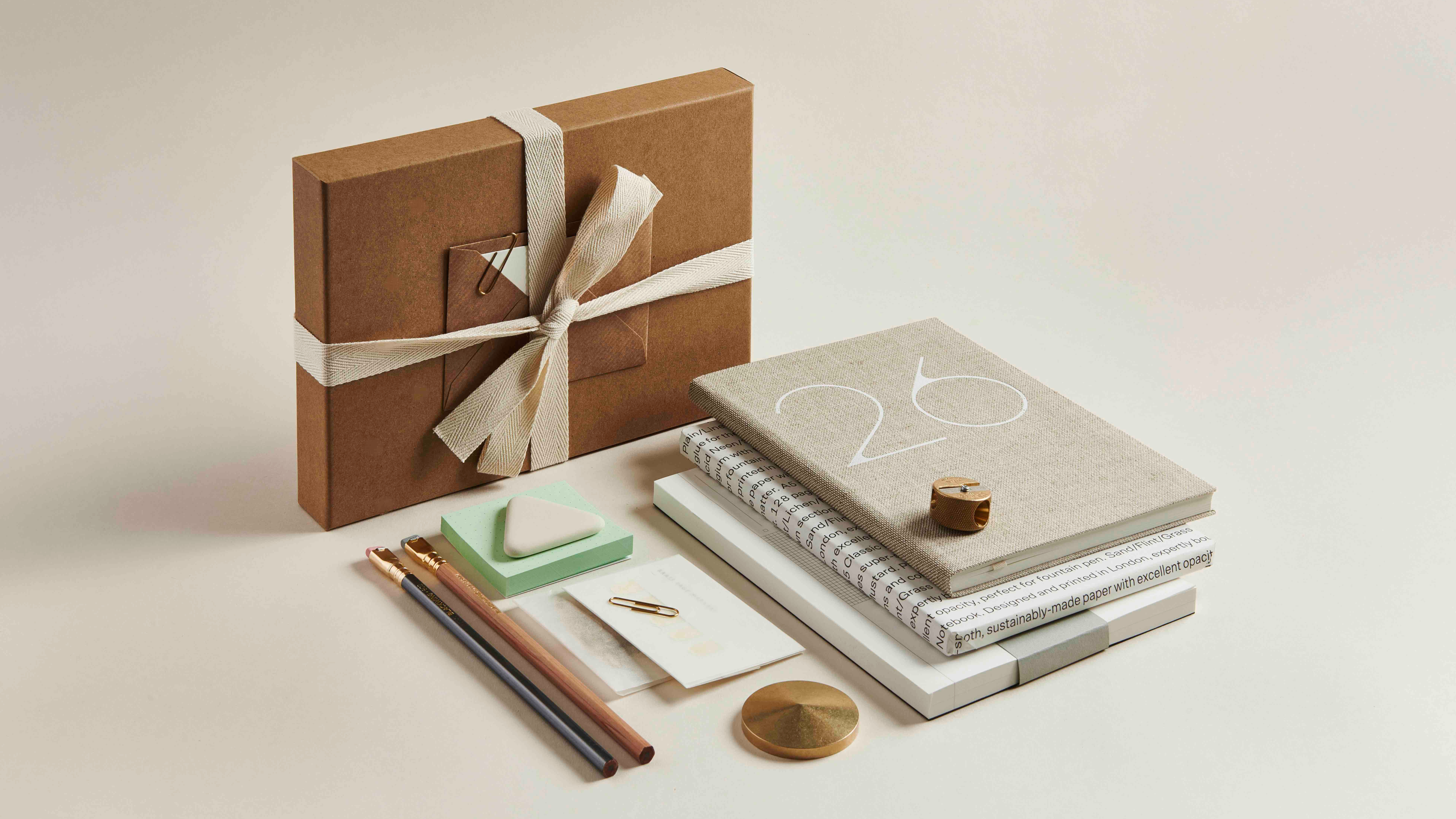 Mark+Fold turns ten with first Shoreditch pop-up
Mark+Fold turns ten with first Shoreditch pop-upBritish stationery brand Mark+Fold celebrates ten years in business with a Brick Lane pop-up featuring new products, small-batch editions and conversations with creatives
-
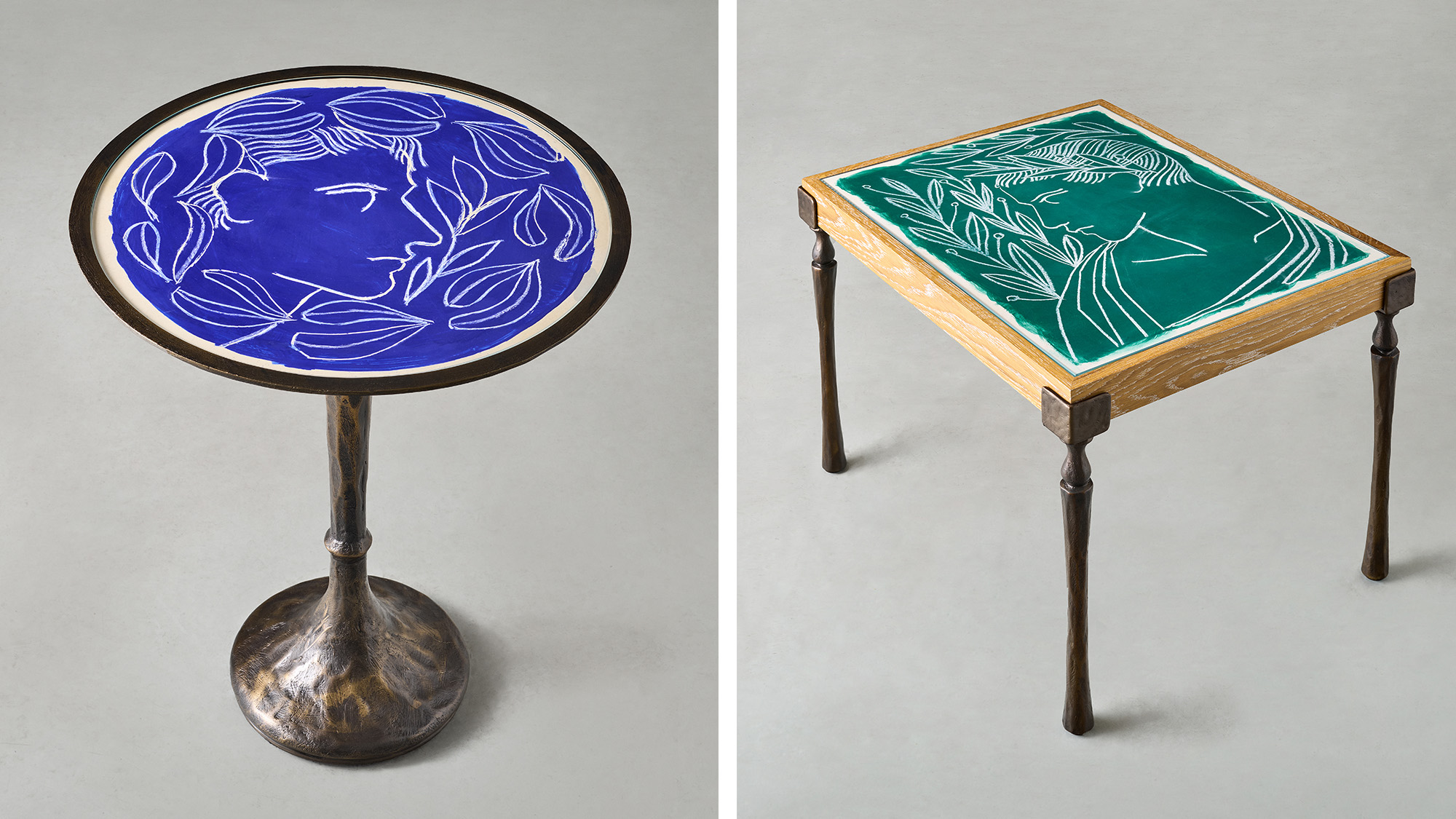 Francis Sultana and Roberto Ruspoli’s Greco-Roman-inspired furniture feels fresh and contemporary
Francis Sultana and Roberto Ruspoli’s Greco-Roman-inspired furniture feels fresh and contemporaryA new collection, launching at David Gill Gallery in London, presents furniture and decorative pieces inspired by Mediterranean villas, French art and Etruscan engraving
-
 Nordic Knots arrives in London with a stylish pied-à-terre in Mayfair
Nordic Knots arrives in London with a stylish pied-à-terre in Mayfair‘Design has always been about creating a feeling’: Nordic Knots brings its vision of home to Mayfair
-
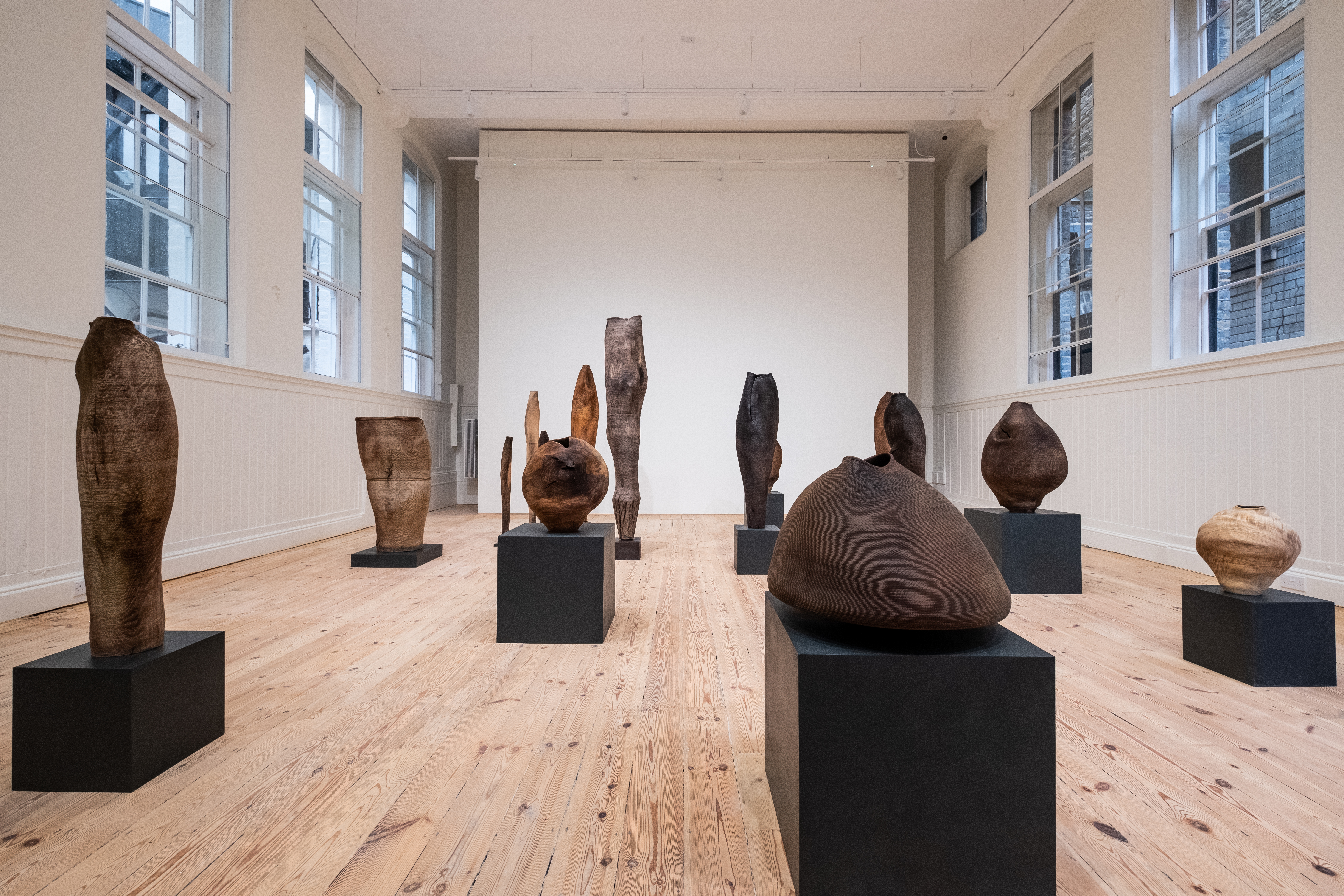 A once-abandoned Mayfair schoolhouse is set to become London's ultimate destination for crafted arts
A once-abandoned Mayfair schoolhouse is set to become London's ultimate destination for crafted artsGallerist Sarah Myerscough opens a new permanent location, which will serve as a space to celebrate and foster craftsmanship in the city
-
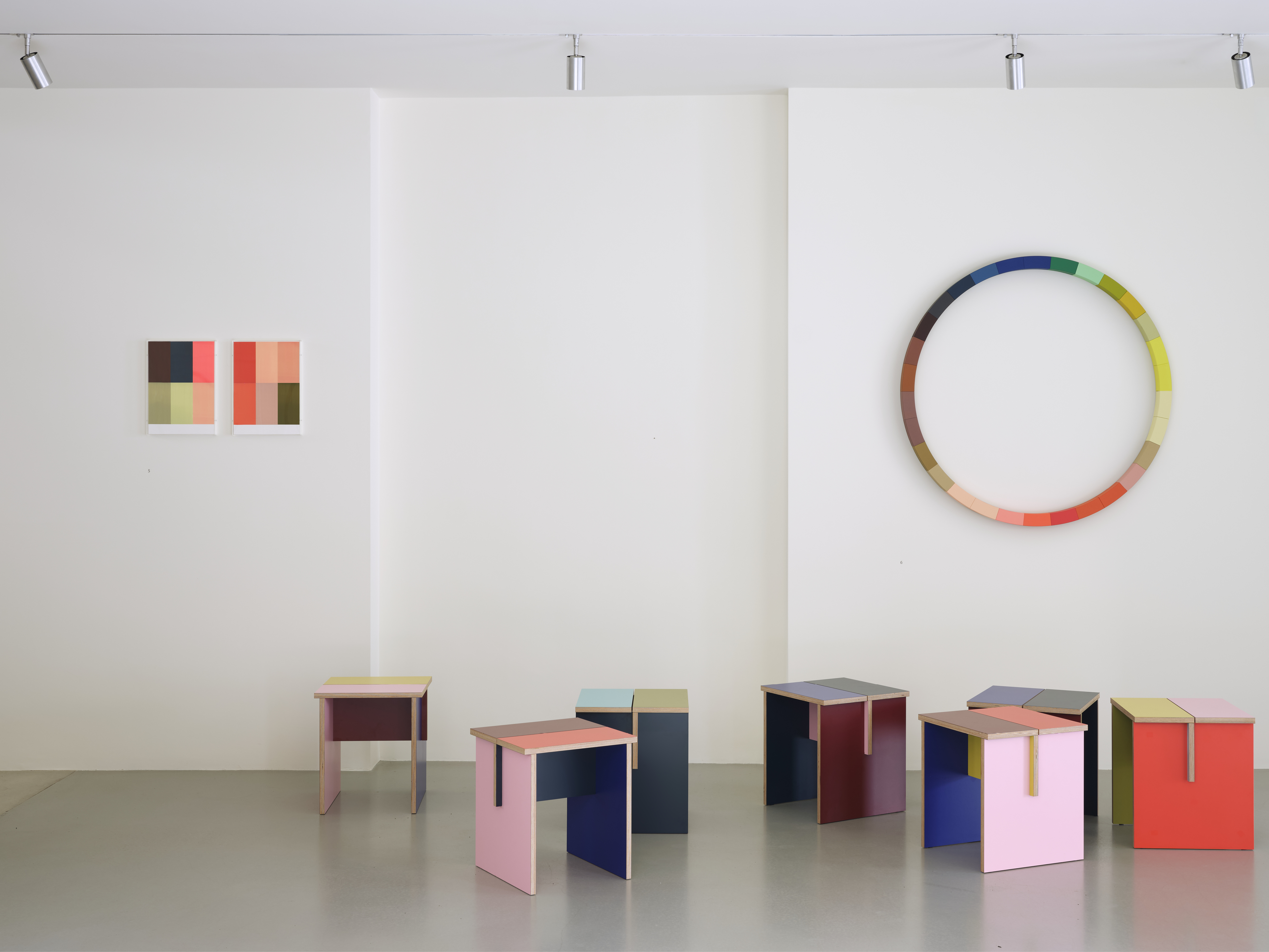 Sophie Smallhorn’s plywood tables for Uncommon Projects are colourful and modular
Sophie Smallhorn’s plywood tables for Uncommon Projects are colourful and modularThese modular tables by the artist and the plywood specialist play with colour for function, fun and flexibility